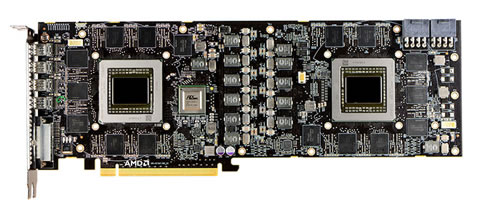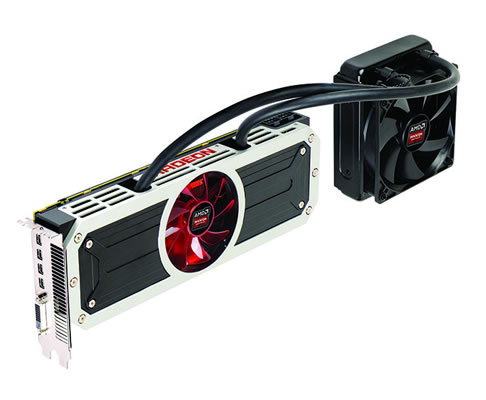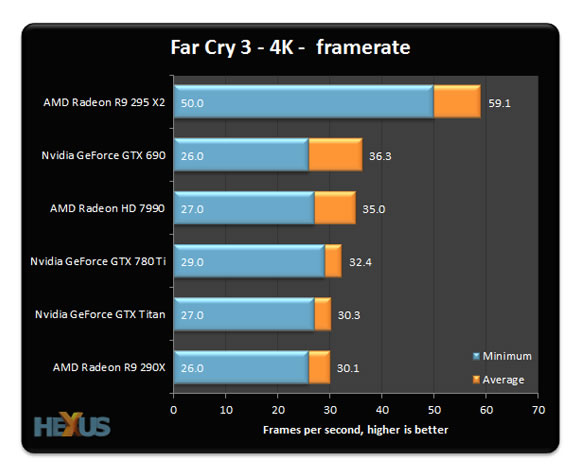Our Aim
To provide you with an overview on New And existing technologies, hopefully helping you understand the changes in the technology. Together with the overviews we hope to bring topical issues to light from a series of independent reviewers saving you the time And hassle of fact finding over the web.
We will over time provide you with quality content which you can browse and subscribe to at your leisure.
TekSpek 's

AMD R9 295X2 Graphics Card
Date issued:

Generational improvements in GPU performance can often be highly impressive, just consider the transition from Nvidia's GeForce GTX 580 to GTX 680, or AMD's Radeon HD 6970 to HD 7970. However, the largest jumps in GPU performance occur when AMD or Nvidia release dual-GPU monstrosities.
The market is certainly no stranger to such products. In recent years we've witnessed the dual-GPU GeForce GTX 590 and GTX 690 graphics cards from Nvidia as well as the Radeon HD 6990 and HD 7990 from AMD. Typically, these dual-GPU products combined slightly cut-down versions of the fastest single-GPU products with a price premium over an equivalent dual-card configuration - you paid more for having two of the best on one board.
The most recent, and outlandish, instance of this is Nvidia's monstrous GeForce GTX Titan Z. While its amalgamation of two under-clocked GTX Titan Black GPUs is nothing out of the ordinary, the $2,999 price tag is enough to make even the most deep-walleted enthusiast tremble. Nvidia, however, claims to be targeting workstation users, rather than the traditional gaming audience of its GeForce products. Perhaps now is the ideal time for AMD to play its hand?
Rather conveniently AMD has been working on its dual-GPU graphics card for some time now. The Radeon R9 295X2, codenamed Vesuvius, combines two full-fat Radeon R9 290X GPUs onto a single PCB. Even more interesting is the fact AMD has increased core clocks above the single-GPU equivalent, and not decreased them as we've typically seen in the past. Just how has AMD managed to tame two 250W GPUs in a single graphics card form factor? An important question to ask given that the single-GPU R9 290X ran consistently at 95 degrees Celsius under reference air cooling.
Specification
| GPU | Radeon R9 295X2 8GB |
Radeon R9 290X 4GB |
Radeon HD 7990 6GB |
Nvidia GeForce GTX Titan Black 6GB |
Nvidia GeForce GTX 780 Ti 3GB |
Nvidia GeForce GTX 690 4GB |
|---|---|---|---|---|---|---|
| Launch date | April 2014 |
November 2013 |
April 2013 |
February 2014 |
November 2013 |
April 2012 |
| Configuration | Dual GPU |
Single GPU |
Dual GPU |
Single GPU |
Single GPU |
Dual GPU |
| Process | 28nm |
28nm |
28nm |
28nm |
28nm |
28nm |
| Transistors | 12.4bn |
6.2bn |
8.6bn |
7.1bn |
7.1bn |
7.1bn |
| Approx Die Size | 438mm² x2 |
438mm² |
352mm² x2 |
551mm² |
551mm² |
294mm² x2 |
| Processors | 5,632 |
2,816 |
4,096 |
2,880 |
2,880 |
3,072 |
| Texture Units | 352 |
176 |
256 |
240 |
240 |
256 |
| ROP Units | 128 |
64 |
64 |
48 |
48 |
64 |
| GPU Clock/Boost (MHz) | up to 1,015 |
up to 1,000 |
up to 1,000 |
up to 980 |
up to 928 |
up to 1,019 |
| GFLOPS | up to 11,433 |
up to 5,632 |
up to 8,192 |
up to 5,645 |
up to 5,345 |
up to 6,260 |
| Memory Clock (MHz) | 5,000 |
5,000 |
6,000 |
7,000 |
7,000 |
6,000 |
| Memory Bus (bits) | 512 x2 |
512 |
384 x2 |
384 |
384 |
256 x2 |
| Max bandwidth (GB/s) | 320 |
320 |
288 |
336.5 |
336.5 |
192 |
| Power Connectors | 8+8-pin |
8+6-pin |
8+8-pin |
8+6-pin |
8+6-pin |
8+8-pin |
| TDP (watts) | 500 |
250 |
375 |
250 |
250 |
300 |
| GFLOPS per watt | 22.87 |
22.52 |
21.85 |
22.58 |
21.38 |
20.87 |
| Current price | $1,499 |
$549 |
NA |
$999 |
$699 |
NA |
Analysis
AMD's Radeon R9 295X2 is the first time where the whole is more than the sum of its parts for a dual-GPU product. In fact, the R9 295X2 has higher clock speeds than the R9 290X, albeit only by a minor 15MHz. AMD proclaims that the R9 295X2 is wasted on anything short of a 4K display, which is a timely statement given that the cost of 4K screens is in freefall at the moment.
The typical technique of using down-clocked, voltage-optimised GPUs clearly doesn't apply here, so what trick does AMD have up its sleeve? The specifications reveal a full 500W TDP, that's 125W more than the HD 7990 which made use of a pair of HD 7970s.
Bending the rules yet further still, AMD has even toyed around with the PCIe specifications. The R9 295X2 makes use of just two 8 pin connectors, which, when combined with the 75W provided by the PCIe bus, deliver 375W in total. The 125W deficit that is left over is made up for by forcing the 8-pin PCIe connectors to deliver more power than they are normally required to. Resultantly, a strong power supply is going to be needed, and AMD predict a minimum of a 1,000W unit to deliver the 50 amps required by the Radeon R9 295X2.
Playing fast and loose
Unleashing copious amounts of graphics horsepower has an exponential effect on power consumption and thermal output. Even the most efficient air-cooled solution would struggle to deal with the gargantuan 500W TDP so it shouldn't come as a surprise that AMD has opted for watercooling instead.
Teaming up with well-known watercooling OEM Asetek, AMD's R9 295X2 makes use of a 120mm radiator with a pair of 120mm fans. That liquid-cooling loop is bestowed with the formidable task of cooling a pair of Hawaii (R9 290x) GPUs. A separate fan has been assigned the responsibility of cooling the VRM and power components that have to deliver up to 500W at peak usage.
AMD's PowerTune frequency-boosting technology, combined with the liquid cooling, explains why the R9 295X2 is more than the sum of its parts. Unlike the reference R9 290X the R9 295X2 manages to avert thermal-throttling issues and in most cases the R9 295X2 will opportunistically maintain its maximum 1,015MHz boost clock.
The only area of disappointment is the traditionally-neglected memory clock. The default configuration of 5,000MHz across the dual 512-bit buses brings no obvious performance benefit over a standard R9 290X, although, of course, there are two instead of one.
The card... and performance

The R9 295X2 boasts excellent construction quality and has a streamlined installation procedure that shouldn't take even a basic user more than 5 minutes to get to grips with.
Performance is equally as spectacular, with the AMD Radeon R9 295X2 easily beating all other single-GPUs on the market right now. Leading technology website HEXUS.net shows it to be considerably faster than anything else currently available in a single-card form factor.

For context, the Radeon R9 295X2 is twice as fast as the GeForce GTX Titan and blasts the dual-GPU GeForce GTX 690 and Radeon HD 7990 out of the proverbial water. A worthy holder of the title 'world's fastest graphics card' the R9 295X2 can be had in the UK for approximately £1,100, including VAT, at launch.
As always, Scan Computers will be stocking the AMD Radeon R9 295X2 as soon as it's available to buy.